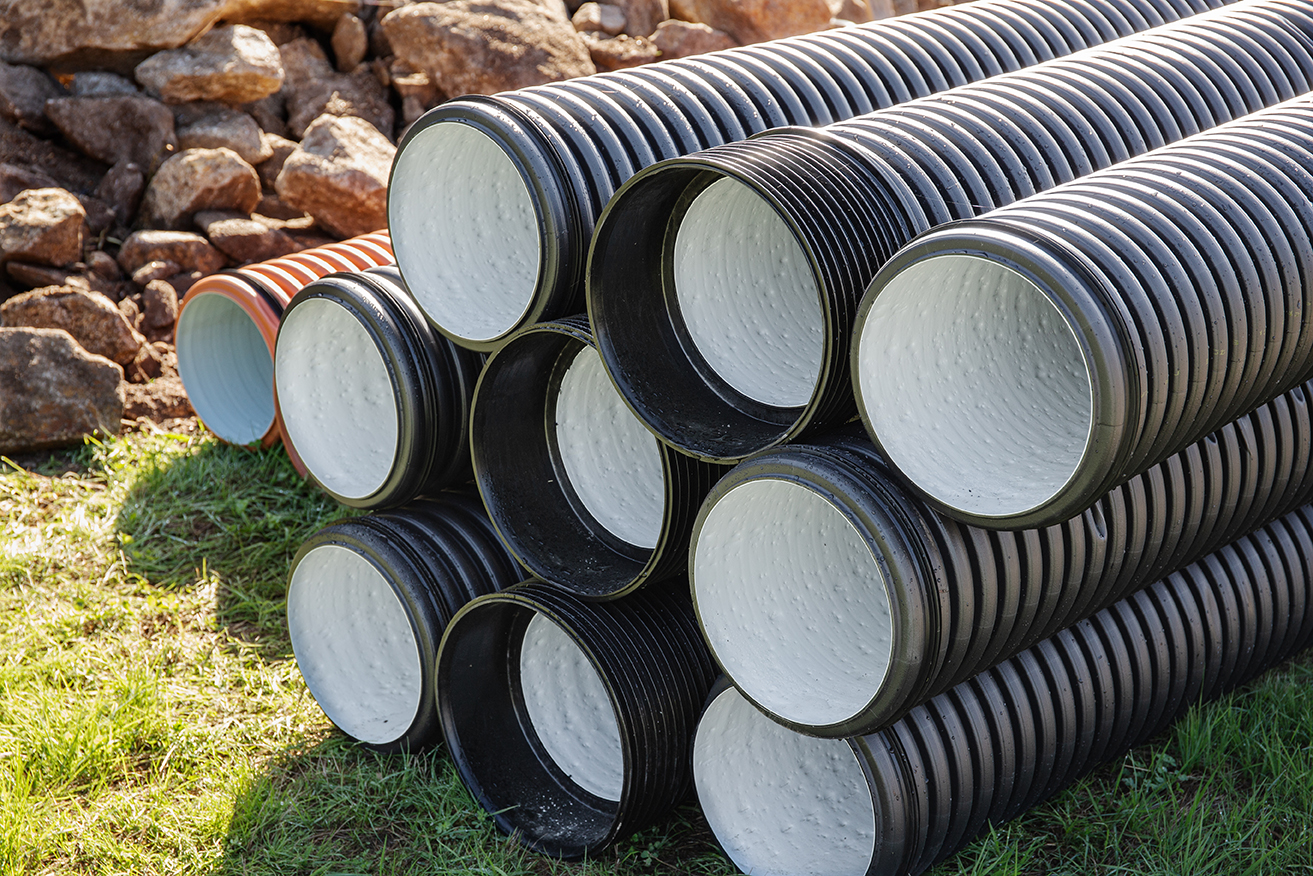High-density polyethylene (HDPE) poly pipe has revolutionized fluid transport across industries. These robust plastic pipes offer exceptional strength and flexibility, making them ideal for various applications in challenging environments. HDPE pipes resist corrosion, handle extreme temperatures, and can bend without breaking. Their versatility makes them essential in urban development, agriculture, and industrial settings, even in harsh environments like deep oceans or earthquake-prone areas.
Understanding HDPE Poly Pipe Technology
HDPE pipe meaning goes beyond just another type of plastic tubing. The unique properties of HDPE pipes come from their molecular structure, where tightly packed ethylene molecules create a material with an excellent strength-to-weight ratio. This structure allows HDPE pipes to withstand various stresses, including physical impacts, chemical exposure, and temperature changes, making them a reliable choice for demanding projects.
Since their introduction in the 1950s, HDPE pipes have undergone significant development. Initially used primarily for natural gas distribution, they now serve multiple purposes across various sectors:
- Water supply systems
- Sewage management
- Industrial fluid transport
- Geothermal heating systems
- Telecommunications
The expansion of HDPE pipe applications has been driven by continuous improvements in manufacturing processes and material science. For instance, the development of bimodal HDPE resins in the 1990s significantly enhanced the pipe’s stress crack resistance and long-term strength. This innovation allowed for the production of pipes with thinner walls yet greater durability, reducing material costs and improving installation efficiency.
Recent Advancements in HDPE Pipe Manufacturing
Recent innovations in HDPE pipe production have further enhanced their performance and durability:
- Enhanced polymer formulations: Modern HDPE pipes incorporate advanced additives and co-monomers to improve chemical resistance. For example, the addition of carbon black (typically 2-3% by weight) provides excellent UV resistance, extending the pipe’s outdoor lifespan.
- Precision manufacturing techniques: Computer-controlled extrusion processes ensure consistent wall thickness and material distribution. This precision contributes to uniform pipe strength and performance, with thickness variations often held to within ±5% of the specified value.
- Incorporation of strengthening materials: Some manufacturers are exploring the addition of nanocomposites, such as carbon nanotubes or nanoclay, to further enhance the pipe’s mechanical properties. Early studies suggest potential improvements in tensile strength by up to 20%.
- Multi-layer pipe designs: Specialized applications now benefit from multi-layer HDPE pipes. For instance, potable water pipes may feature an inner layer optimized for water quality, a middle layer for strength, and an outer layer for environmental protection.
These advancements have significantly improved HDPE pipe performance, extending service life and expanding potential applications. For example, modern HDPE pipes designed for water distribution can have a projected lifespan of over 100 years, according to studies conducted by the Plastic Pipe Institute.
Key Benefits of HDPE Poly Pipes in Harsh Conditions
HDPE poly pipes have gained widespread recognition for their exceptional performance in challenging environments. Their unique properties make them particularly suitable for applications where traditional materials often fall short. The following table highlights some of the key advantages that HDPE pipes offer, especially in harsh conditions:
| Feature | Benefit | Application Example | Comparative Advantage |
| Chemical Resistance | Withstands exposure to various chemicals without degradation. | Industrial fluid transport | HDPE pipes resist a broader range of chemicals compared to PVC, including strong acids and bases. |
| Temperature Tolerance | Functions in extreme hot and cold conditions (-40°C to 80°C). | Outdoor water systems in diverse climates | Wider temperature range than most metal pipes without risk of freezing or heat damage. |
| Flexibility | Resists damage from ground movement and reduces installation costs. | Earthquake-prone areas | Can deflect up to 7.5% without damage, compared to 0.5% for rigid pipes. |
| Wear Resistance | Long-lasting performance with abrasive materials. | Mining operations | Up to 4 times longer service life than steel pipes in abrasive slurry applications. |
HDPE Pipes in Extreme Conditions
Modern HDPE pipes demonstrate remarkable performance in extreme conditions. They can operate effectively in temperatures ranging from -40°C to 80°C (-40°F to 176°F). This wide temperature range makes them suitable for global use, from arctic to desert environments.
In cold climates, HDPE’s flexibility allows it to withstand freeze-thaw cycles without cracking. The pipes can expand slightly as water freezes, then return to their original shape without damage. In hot climates, HDPE retains its strength and doesn’t soften or deform like some other plastics might.
HDPE pipes also excel in high-altitude applications. Unlike metal pipes, they don’t become brittle in the extreme cold of high mountain regions. This property has made HDPE a preferred choice for water systems in mountainous areas, where temperatures can fluctuate dramatically.
Pressure Capacity of HDPE Pipes
High-grade HDPE pipes can withstand significant internal pressures. Depending on the specific grade and wall thickness, HDPE pipes can handle pressures up to 250 psi (pounds per square inch) or even higher. This high-pressure tolerance makes them ideal for long-distance water transmission and high-rise building supply systems.
The pressure rating of HDPE pipes is typically expressed as the Standard Dimension Ratio (SDR), which is the ratio of the pipe’s outside diameter to its wall thickness. Lower SDR values indicate higher pressure ratings. For example, an SDR 7 HDPE pipe can generally withstand higher pressures than an SDR 11 pipe of the same material grade.
HDPE pipes maintain their pressure rating over time better than many alternative materials. While metal pipes may corrode or develop mineral deposits that reduce their effective diameter and pressure capacity, HDPE pipes resist these issues, maintaining their performance over decades of use.
Advanced HDPE Pipe Connection Methods
As HDPE pipe technology evolves, so do the methods for connecting these versatile pipes. Advanced connection techniques ensure the integrity and longevity of HDPE piping systems, even in the most challenging environments. Two innovative methods stand out for their reliability and efficiency: electrofusion joining and smart fittings.
Electrofusion Joining
Electrofusion is an advanced method of joining HDPE pipes that creates exceptionally strong and reliable connections. This process uses electrical resistance to heat and fuse HDPE pipes and fittings together. Here’s how it works:
- The pipe ends are cleaned and prepared for joining.
- An electrofusion fitting, which contains embedded electrical resistance wires, is placed over the pipe ends.
- An electrical current is applied to the fitting, heating the wires and melting the surrounding plastic.
- As the plastic cools, it forms a solid, homogeneous joint that’s as strong as the pipe itself.
Electrofusion is particularly useful in confined spaces where traditional butt fusion equipment can’t be used. It’s also highly reliable, with joint failure rates typically less than 0.1% when proper procedures are followed.
Smart Fittings
Smart fittings represent the cutting edge of HDPE pipe technology. These advanced components are equipped with sensors that provide real-time data on various pipe conditions:
- Pressure levels: Continuous monitoring can detect sudden pressure changes that might indicate leaks or system failures.
- Temperature: Temperature data can help prevent freezing in cold climates or overheating in industrial applications.
- Flow rates: Monitoring flow rates can optimize system efficiency and detect unauthorized usage or leaks.
Some smart fittings also incorporate RFID (Radio-Frequency Identification) technology, allowing for easy tracking and identification of pipe components. This can be particularly useful for large-scale infrastructure projects or complex industrial installations.
The data from smart fittings can be integrated into SCADA (Supervisory Control and Data Acquisition) systems, enabling proactive maintenance and early problem detection. This technology has the potential to significantly reduce water loss in municipal systems and prevent costly failures in industrial applications.
Environmental Benefits of HDPE Pipes
HDPE pipes offer several significant environmental advantages:
- Lower energy requirements for production: Manufacturing HDPE pipes typically requires 50% less energy than producing equivalent ductile iron pipes.
- Recyclability: HDPE is 100% recyclable. At the end of their service life, HDPE pipes can be ground up and used to manufacture new pipes or other plastic products.
- Extended lifespan: With a service life of 50-100 years, HDPE pipes reduce the frequency of replacement and associated environmental impacts.
- Reduced pumping energy: The smooth interior surface of HDPE pipes (typical roughness coefficient of 0.00006 inches) reduces friction, lowering the energy required for pumping by up to 30% compared to metal pipes.
- Lower carbon footprint: According to the Plastics Pipe Institute, HDPE piping has the lowest total greenhouse gas production compared to other pipe types throughout its lifecycle. This is due to lower energy requirements in manufacturing, more efficient transportation, and reduced emissions during installation and disposal.
Furthermore, the light weight of HDPE pipes reduces transportation costs and associated emissions. For example, a 100-foot length of 8-inch HDPE pipe weighs approximately 400 pounds, compared to about 2,000 pounds for the same length of ductile iron pipe.
HDPE Pipe Applications Across Industries
Oil and Gas Sector
HDPE pipes excel in oil and gas applications due to their corrosion resistance and high-pressure tolerance. They’re particularly valuable in offshore operations, where they can last up to three times longer than steel pipes. Specific applications include:
- Gathering lines for crude oil and natural gas.
- Water injection lines for enhanced oil recovery.
- Offshore risers and subsea pipelines.
- Liners for steel pipes to prevent corrosion.
In the Permian Basin, a major U.S. oil field, HDPE pipes are widely used for moving produced water. These pipes help transport a large part of the nearly 19 million barrels of water produced daily. While HDPE pipes are key for moving this water, the full disposal process also uses special wells to put the water back underground.
Mining Industry
In mining operations, HDPE pipes outperform steel pipes by up to four times in lifespan when handling abrasive slurries. Their exceptional wear resistance significantly extends their lifespan and reduces maintenance and replacement costs. Key applications of HDPE poly pipe in mining include:
- Tailings transport;
- Dewatering systems;
- Acid leaching processes; and
- Mine water supply and disposal.
The durability of HDPE tubing in harsh mining conditions is exemplified by several case studies:
- At the Cerro Negro Norte Mine in Chile, HDPE pipes are used to transport thickened tailings with a solid concentration by weight of 65% over long distances.
- In the Toromocho copper project in Peru, HDPE pipes combined with positive displacement pumps transport highly viscous tailings slurry to the tailings storage facility, handling approximately 140,000 metric tonnes per day.
- At the Antapaccay mine in Peru, HDPE pipes transport thickened tailings with 58% solids content to fill an old open pit, demonstrating the versatility of HDPE tubing in innovative tailings management solutions.
These examples showcase how HDPE pipes enable efficient and reliable tailings transport in large-scale mining operations, often in challenging environments and with high-density slurries. The use of HDPE pipes in these applications has led to significant reductions in pipe replacement frequency, resulting in substantial cost savings and minimized operational downtime.
Agricultural Use
Farmers prefer HDPE pipes for irrigation systems due to their durability, flexibility, and resistance to UV radiation. Studies show that HDPE pipe irrigation can improve water efficiency by up to 20% compared to traditional open channel methods. Applications include:
- Drip irrigation systems;
- Center pivot irrigation;
- Subsurface drainage; and
- Livestock watering systems.
In Israel, a country known for its advanced agricultural techniques, over 75% of irrigation systems use HDPE pipes due to their efficiency and durability in arid conditions.
Municipal Water Systems
Cities are increasingly adopting HDPE pipes for water distribution due to their leak resistance and long service life. Some municipalities have reported up to 90% reduction in water losses after switching to HDPE pipes. Applications include:
- Potable water distribution;
- Sewer systems;
- Stormwater management; and
- Trenchless pipe rehabilitation.
The city of Las Vegas, Nevada, has been using HDPE pipes for water mains since the 1970s. The city reports that these pipes have had zero leaks or breaks in over 40 years of service, even in the challenging desert environment.
Coastal Resource Group: Your Trusted HDPE Tubing Supplier
Coastal Resource Group stands out as a premier HDPE tubing supplier, offering comprehensive HDPE pipe solutions tailored to your project needs. Our extensive inventory includes HDPE pipes and fittings from 1/2 inch to 65 inches in diameter, suitable for a wide range of applications.
As a one-stop shop industrial equipment supplier, we provide:
- Custom fabrication capabilities.
- Expert engineering support.
- Efficient delivery through strategic locations and robust logistics.
- Quality assurance: All products meet or exceed industry standards.
- Commitment to sustainable practices.
We offer solutions for diverse applications, including municipal water systems, industrial pipelines, and complex mining operations. Our sales representatives are available 24/7 to address your supply emergencies promptly.
For more information or to discuss your project, contact Coastal Resource Group at (281) 549-4132 or visit our website to request a quote or browse our product catalog. Let us help you enhance the efficiency, durability, and sustainability of your next piping project with HDPE pipes.


